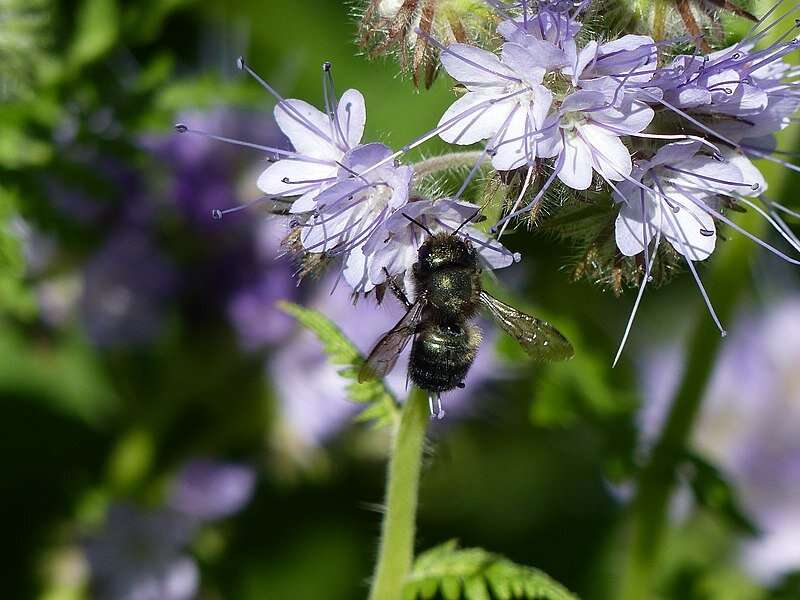Pesticide found to reduce fertility in blue orchard bee

A pair of researchers at the University of California, Davis has found that the neonicotinoid pesticide imidacloprid can reduce fertility rates in the blue orchard bee. In their paper published in Proceedings of the National Academy of Sciences, the group describes testing the response of the valuable pollinator to the presence of imidacloprid.
Prior research has shown that imidacloprid, a neonicotinoid pesticide, is harmful to bees of all types. But as the researchers with this new effort note, little work has been done to determine if the chemical has a generational impact on bees. In this new effort, the team sought to discover if the pesticide harms not just the bees that are impacted by its application, but also their offspring.
To that end, they captured a large number of blue orchard bees, a type that is similar to the honeybee but has different coloring and collects pollen on its belly instead of its legs. It is important to farmers who grow tree-bearing crops, such as almonds, peaches apples and cherries. The captured bees were separated into small groups, each of which were exposed to imidacloprid in different ways. The researchers applied the pesticide to the plants inside the enclosure per the instructions. Some of the plants received multiple doses and some just one. Also, some of the bees were exposed to the chemical while still larvae, others while they were young and others while they were mature. And others yet were exposed more than once during different stages of their life cycle.
The researchers found that bee larvae exposed to the chemical produced 20% fewer offspring after they became adults. They also found that multiple exposures led to even fewer offspring. Those that were exposed as larvae, for example, and were then exposed again as adults had 44% fewer offspring, which, the researchers note, represents approximately 10 fewer offspring out of a normal group of 24.
The findings show that use of imidacloprid on agricultural crops (which is banned in Europe but not the U.S.) can lead to dramatic reductions in bee populations due to reductions in fertility rates.Pesticides and food scarcity dramatically reduce wild bee population
More information: Clara Stuligross et al, Past insecticide exposure reduces bee reproduction and population growth rate, Proceedings of the National Academy of Sciences (2021). DOI: 10.1073/pnas.2109909118
Journal information: Proceedings of the National Academy of Sciences
© 2021 Science X Network
No comments:
Post a Comment